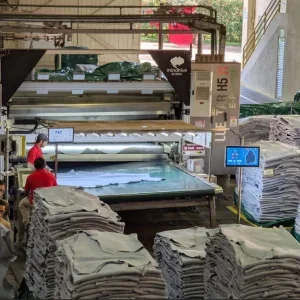A plan to commemorate 50 locations tied to San Francisco's leather and LGBTQ culture with sidewalk markers has been endorsed by the Board of Supervisors and will file for civic design review this week. The resolution in support was taken up on an expedited process this week due to pending deadlines and a streetscape improvement project underway that could incorporate the installation of the plaques.
As the Bay Area Reporter first reported in September, the Leather & LGBTQ Cultural District has proposed recognising current and former businesses in the area by placing bronze plaques in the sidewalk near where they operated or currently are located. Such storied establishments as the Folsom Street Barracks, The Arena, Ramrod, The Brig, and the Club Baths of San Francisco would be memorialised with historical markers.
Leather district leaders plan to file by Friday, April 9, to have the city's arts commission review the designs for the plaques now that the supervisors voted 11-0 at their April 6 meeting to back the project. Gay District 8 Supervisor Rafael Mandelman asked to be added as a co-sponsor.
The district will also be seeking an estimated $120,000 to pay for the plaques from the community impact fees the developer L37 Partners will be required to pay for its 244-rental unit housing development in SOMA. The city's planning commission recently approved the project to be built at Folsom and 11th streets adjacent to the gay nightclub Oasis.
"Each one of these steps will determine whether it goes ahead and whether we can get the money or not," Robert Goldfarb, chair of the leather district's board, told the B.A.R. prior to the supervisors' meeting.
A number of historic SOMA leather businesses have already been memorialised on stone plinths in the San Francisco South of Market Leather History Alley. Dedicated four years ago, the side street project spans Ringold Alley between Eighth and Ninth streets and sports bronze bootprints embedded in the sidewalk honouring various leather community leaders, some of whom owned the remembered businesses.
In conjunction with the leather district plaques will be self-guided walking tours the cultural district plans to host on its website. There will be audio components in addition to write-ups about the various locations, according to Goldfarb.
As David Hyman, who is also involved with the SOMA leather district, noted during the land use committee hearing, "Many visitors who come for Leather Week and other special events ask about these places. They are not forgotten, but in most cases, they are invisible."






